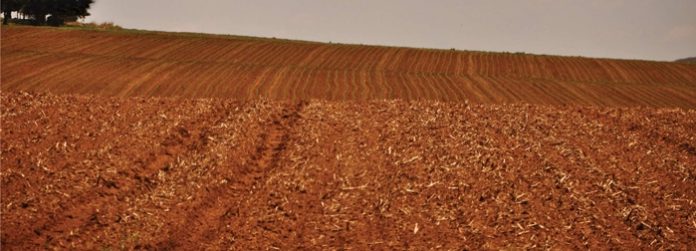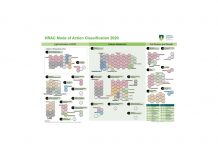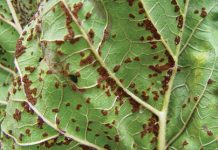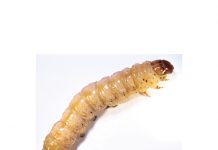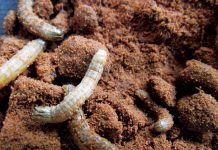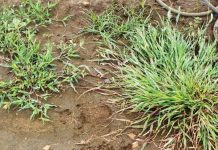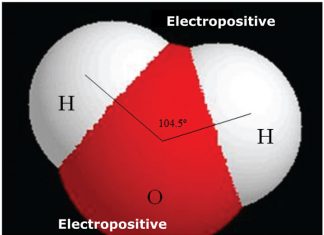September 2018
DR MARYKE CRAVEN, CHARNÉ MYBURGH, OWEN RHODE and DR JEANETTA SAAYMAN-DU TOIT, ARC-Grain Crops, Potchefstroom
The internet has opened doors of knowledge for everyone to enjoy. Research findings are readily available, which allows the reader to draw his or her own conclusions on any topic one can think of. When approached to write a series of articles on the effects of herbicides, such as glyphostae, on soil health, we aimed to provide an objective view of international publications as well as equip the reader to navigate between the ‘potholes’ of publications available online.
These days, anyone can publish online. A popular publication, although based on scientific findings, does not carry the same weight as a scientific paper, however. When compiling a popular publication, the author often presents what he or she perceives to be relevant. Additional information can thereby (un)knowingly be excluded, which could have provided the reader with a better understanding of the impact of the research findings.
One should, therefore, not jump to conclusions when dealing with a popular publication, but rather obtain more information on the topic presented. Contact details of authors are readily available on popular publications so that readers can request the sources used to write a specific article.
When producing scientific publications on the other hand, the research reported on in such a publication must adhere to certain
requirements. This does not necessarily mean that all research findings can be seen as equal, however.
The most important criteria of a scientific journal is that it must be peer-reviewed (i.e. the publication is subject to evaluation by a
panel of reviewers). The second criteria is its impact factor. The impact factor of a journal indicates to a reader how much information published in this journal is referenced in other studies. The higher the impact factor, the more the information is used.
When in doubt as to whether a scientific publication was based on sound scientific principles, researchers at the ARC or tertiary institutions can be contacted for insight into this matter. Lastly, one cannot extrapolate research findings to all situations because the results can easily be misinterpreted, especially by someone that is not a specialist in the relevant field. Our recommendation is rather to contact an expert in the field discussed in the publication to confirm the interpretation thereof.
The series of articles that will be presented by us on this topic might accordingly not be in the usual format that SA Graan/Grain readers are used to. It was specifically done in such a way that the reader is able to access the sources used by us. Regardless, the information presented in these articles only represent a fraction of what has already been published on the effect of herbicides and their impact on soil life. Our hope is that this series of articles might inspire further discussion that would add value to this topic.
Let’s talk herbicide impact
Based on the figures of a report presented on the sale and usage of the pesticides industry in the United States (USA) for the 2008 to 2012 period, herbicides are the most widely applied pesticide1. Since the development of the first herbicide, the primary aim of researchers was to understand and predict how herbicides affect soil fertility through their effects on the micro-organisms responsible for the maintenance of soil fertility and on the populations of invertebrates responsible for the recycling and translocation of nutrients.
Charles Benbrook2 states in his research article published during 2016 that no other pesticide is as intensive and widely used in the USA as glyphosate. In 2014, producers sprayed enough glyphosate to apply ~1 kg/ha on every hectare of USA cultivated cropland and nearly 0,53 kg/ha on all cropland worldwide. Because glyphosate will likely remain the most widely applied pesticide worldwide for years to come, he further stated that there will be a growing interest in quantifying the actual ecological and human health impacts.
In the first topic of our series of articles, we will discuss the outcome of numerous research studies with regards to the effect of glyphosate on soil health facilitating fungi, bacteria and earthworms – the innocent bystanders in the war on weeds. In this article we will mainly focus on microbial biomass and respiration.
What is microbial biomass and why does it matter?
Microbial biomass is a measure of the total weight of the living component (mostly bacteria and fungi) of soil organic matter. It plays a fundamental role – especially in the flow of carbon and nitrogen from newly deposited plants or other materials to the mineral forms of carbon dioxide and ammonium or nitrate ions in the soil.
It serves as an early indicator of changes in total soil organic carbon (C), because unlike organic biomass, it responds quickly to management changes. It is estimated that approximately half the microbial biomass is located in the top 10 cm of a soil profile in which most of the nutrient release occurs.
Microbial biomass contributes up to 5% of the total organic carbon and N in soil that is available to plants once the micro-organisms die. The soil microbial biomass acts as the transformation agent of organic matter in soil and is both a source and sink of the nutrients C, N, P and S contained in the organic matter. It is the centre of the majority of biological activity in soil.
Microbial respiration is a measure of carbon dioxide (CO2) released by soil microbes from the soil trough the decomposition of soil organic matter. It is an important indicator of soil health because it indicates the level of microbial activity, soil organic matter content and its decomposition. It can account for 10% to 90% of the CO2 efflux from soils, which has a substantial effect on the atmospheric CO2 concentration.
The rate of soil respiration is an indicator of the nutrients contained in organic matter that is being converted into forms that is available to crops (e.g., phosphate as PO4, nitrate-nitrogen as NO3, and sulphate as SO4). Literature states that in the short term, high soil respiration rates are not always desirable because it may be an indication of unstable systems and loss of soil organic matter due to excessive tillage or to other factors degrading soil health.
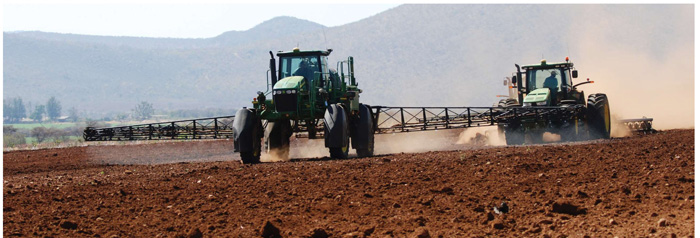
Herbicides and microbial biomass
The application of herbicides can have both positive and negative effects on different members of the microbial community. It can be toxic to some microbes resulting in reduced microbial biomass. Alternatively, herbicides can be a food source supporting microbial growth. Micro-organisms play a central role in the degradation of herbicides.
Examples of cases in which the application of herbicides had an initial negative impact are readily available. Bromacil reduced microbial biomass significantly for up to eleven months after application3. It is possible that this reduction in microbial biomass contributes to the retarded bromacil degradation when this herbicide is repeatedly applied.
During a laboratory study the soil microbial community structure shifted after application of imazethapyr, but were able to recover again after 60 days4. Compared to untreated soil, imazamox and benfluralin resulted in a 25% and almost 65% decrease in microbial biomass-C content, respectively. However, the microbial biomass-C content did return to initial values but at varying times, which depended on the incubation conditions5.
Numerous studies investigated the impact of glyphosate on soil microbiology. Wardle and Parkinson6,7 reported in two separate publications published in 1990 that there was a transitory increase in soil microbial biomass and soil microbial respiration after glyphosate application.
Two other separate research groups8,9 reported that there was a significantly negative impact on microbial community structure and soil microbial biomass. Some research studies reported no significant effect at all10,11. If one only read the first set of articles, the conclusion drawn would not have been based on all of the research conducted internationally. On the other hand, if all of these articles have been read, the reader would have been left confused and unsatisfied because of the variable and contradictory results presented.
During 2016, a research group from Australia, however, investigated the impact of glyphosate on soil microbial biomass and respiration using meta-analysis. They published their findings in the journal Soil biology and biochemistry12. Based on their method used, they compiled a dataset from peer reviewed literature published up to 2015, which dealt with studies in which glyphosate was applied to soil after measuring soil microbial biomass or soil microbial respiration.
Only studies that had suitable controls and replicating statistics were included. These studies had to adhere to specific inputs made, similar outputs measured and sound scientific approaches. Consequently, out of the total of 191 scientific articles published on this topic, only 36 were selected for this paper. Based on the data generated and meta-analysis conducted, they were able to conclude on how soil microbial respiration and soil microbial biomass would likely react under various conditions in response to glyphosate application.
The authors converted kg glyphosate applied per ha to mg active ingredient (a.i.)/kg soil (note: glyphosate concentration is in general expressed as acid equivalent per litre), thereby establishing a standardised form for application rates used. European regulatory procedures where then used where the bulk density of dry soil is assumed to be 1,5 g/cm3 and the average depth of surface-applied herbicide penetration into the soil, 50 mm.
Based on the formulations used by the Nguyen group12, a glyphosate product with a 480 g a.i./l formulation applied at 2,2 l/ha is the equivalent of 1,4 mg a.i./kg soil. During this study various factors and not single aspects determined the eventual response of the microbial community observed.
The following observations were made regarding microbial respiration:
- Glyphosate concentration: Of all of the factors investigated, glyphosate concentration applied had the strongest influence on the soil microbial respiration response. At concentrations of more than 10 mg/kg but less than 200 mg/kg glyphosate showed a negative effect on respiration while at concentrations greater than 200 mg/kg it generally stimulated respiration. Concentrations of less than 10 mg/kg had no effect on microbial respiration.
- Days after application: Over the short term (2 – 60 days after initial exposure), respiration was more likely to increase. However, after 60 days and onward, respiration declined to levels below that of control soils not receiving glyphosate.
- Soil pH: Glyphosate generally stimulated respiration in soils with pH <5,5, but in more neutral soils (pH 5,5 – 7,5) glyphosate had a tendency to show a negative impact on respiration. Limited data on alkaline soils with pH >7,5 prevented an assessment of the impacts of glyphosate on soil microbial respiration when applied on these soils.
- Carbon content: Although soil organic carbon content played a statistically significant role in moderating the impact of glyphosate, its effect was not particularly strong. Glyphosate was more likely to stimulate respiration in soil low in organic carbon than in soils with a higher organic carbon content.
This study further showed that the effects that glyphosate application had on microbial biomass were, similar to that on respiration, dependent on various variables such as pH, glyphosate concentration, organic carbon content and time after application12.
Soil microbial biomass was more likely to increase with short-term exposure (<100 d), low soil pH (<5,5) and high glyphosate concentration (>200 mg/kg), whereas the relative microbial biomass was more likely to decrease in the longer term (>100 d), at neutral pH and at lower glyphosate concentrations.
Soil organic matter had a positive influence on the soil microbial biomass response to glyphosate exposure. The application of glyphosate to high organic carbon soils was more likely to favour higher soil microbial compounds. Mid-range concentrations of glyphosate (10 mg/kg – 100 mg/kg) were associated with significantly lower soil microbial biomass. No effect was again observed at <10 mg/kg.
The Nguyen research group concluded that at field applied rates of glyphosate (<10 mg/kg), there was no significant effect on soil microbial respiration and soil microbial biomass, but that soil microbial biomass was significantly lower at glyphosate concentrations of 10 mg/kg to 100 mg/kg.
Their study ultimately concluded that management and environmental factors regulated the soil microbial response. Research that reports on either the toxicity or safety of glyphosate to soil microbial respiration and soil microbial biomass should, therefore, stipulate details of the conditions under which glyphosate were tested and applied. Before drawing conclusions in this regard, a reader should evaluate the approach followed to obtain the results reported in an article as well as the conditions under which the findings were made.
What is the effect of repeated, long term glyphosate use? A study published by a USA based research group investigated the effects of glyphosate on soil microbial communities maintained in soil from pine plantations. Glyphosate was repeatedly applied for nine to 13 years in these plantations in order to control vegetation13.
This study concluded that repeated application of glyphosate had minimal effect on seasonal microbial characteristics despite substantial changes in vegetation composition and growth. This situation does, however, not necessarily reflect what is happening under standard agricultural practices and additional research is required to evaluate the effect of long-term use of a specific product such as glyphosate on microbial life.
In Part 2 of this series we will focus on research findings published on the impact of glyphosate and other herbicides on fungi and bacteria.
 Readers are welcome to contact the authors at ARC-Grain Crops with any enquires they might have at 018 299 6100.
Readers are welcome to contact the authors at ARC-Grain Crops with any enquires they might have at 018 299 6100.
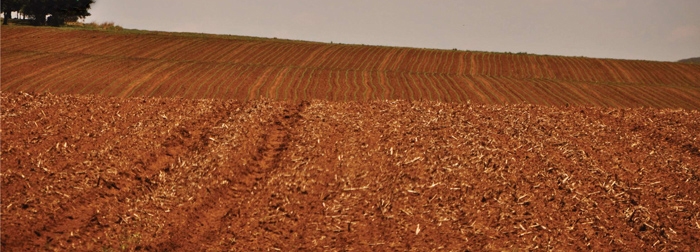
References
1 Atwood, D and Paisley-Jones, C. 2017. Pesticides industry sales and usage 2008 – 2012 market estimates. US Environmental Protection Agency Washington, DC.
2 Benbrook, C. 2016. Trends in glyphosate herbicide use in the United States and globally. Environmental Sciences 28:3 https://doi.org/10.1186/s12302-016-0070-0.
3 Sanders, P, Wardle, D and Rahman, A. 1996. Persistence of bromacil in soils with different management histories. Proc. 49th N.Z. Plant Protection Conference 1996:207 – 211.
4 Zhang, C, Xu, J, Liu, X, Dong, F, Kong, Z, Sheng Y and Zheng, Y. 2010. Impact of imazethapyr on the microbial community structure in agricultural soils. Chemosphere 81:800 – 806.
5 Vischetti, C, Casucci, C and Perucci, P. 2002. Relationship between changes of soil microbial biomass content and imazamox and benfluralin degradation. Biology and Fertility of Soils 35:13 – 17.
6 Wardle, DA and Parkinson, D. 1990a. Effects of three herbicides on soil microbial biomass and activity. Plant and Soil 122:21 – 28.
7 Wardle, DA and Parkinson, D. 1990b. Influence of the herbicide glyphosate on soil microbial community structure. Plant and Soil 122:29 – 37.
8 Andrea, MMD, Peres, TB and Luchini, LC. 2003. Influence of repeated applications of glyphosate on its persistence and soil bioactivity. Pesquisa Agropecuaria Brasileira 38:1 329 – 1 335.
9 Lancaster, SH, Hollister, EB, Senseman, SA and Gentry, TJ. 2009. Effects of repeated glyphosate applications on soil microbial community composition and the mineralization of glyphosate. Pest Management Science 59 – 64.
10 Zabaloy, MC, Gomez, E, Garland, JL and Gomez, MA. 2012. Assessment of microbial community function and structure in soil microcosms exposed to glyphosate. Applied Soil Ecology 61:333 – 339.
11 Rosenbaum, KK, Miller, GL, Kremer, RJ and Bradley, KW. 2014. Interactions between glyphosate, fusarium infection of common waterhemp (Amaranthus rudis), and soil microbial abundance and diversity in soil collections from Missouri. Weed Science 62:71 – 82.
12 Nguyen, DB, Rose, MT, Rose, TJ, Morris, SG and Van Zwieten, L. 2016. Impact of glyphosate on soil microbial biomass and respiration: A meta-analysis. Soil Biology and Biochemistry 93:50 – 57.
13 Busse, MD, Ratcliff, AW, Shestak, CJ and Power, RF. 2001. Glyphosate toxicity and the effect of long-term vegetation control on soul microbial communities. Soil Biology and Biochemistry 33:1 777 – 1 789.
Publication: September 2018
Section: Focus on integrated pest control



